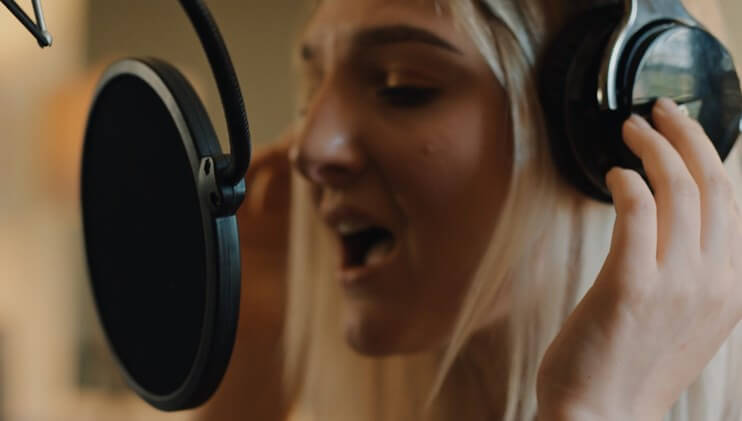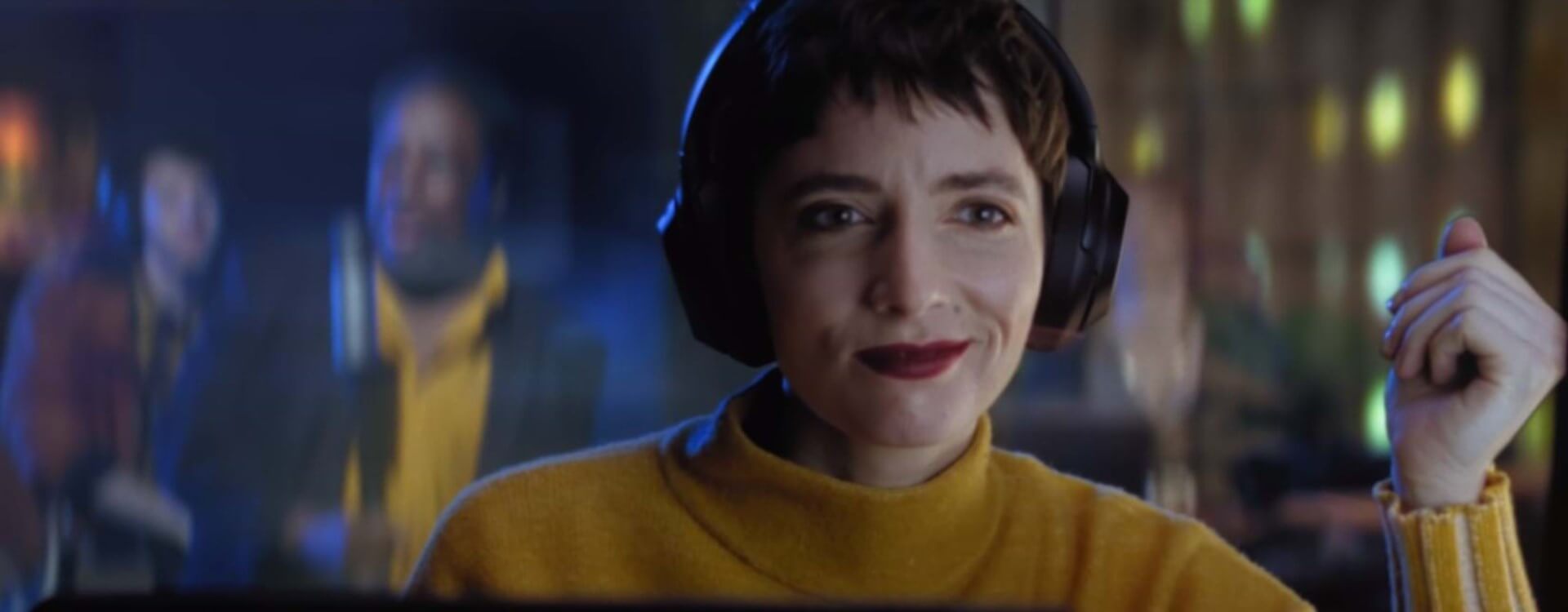Highlights
Table of Contents
Explore article topics
Choosing the right background music for a YouTube video – or BGM for short – will give your production a more polished feel. Just as in film, music heightens emotion and fills the dead space between monologues and dialogues. And when used well, it gives a video a particular atmosphere that will set the mood and capture an audience’s attention. It’s important to learn how to add the songs to your video on a technical level, but in this post, we will focus on the best places to get background music for your video and how to choose the right song.
Background music: how to find the right source for your BGM
There are numerous music sources for videos out there. Some songs are free, some are copyrighted, some are royalty-free. Below, we discuss strategies for finding great background music for videos, so you can make your videos sound good without going bankrupt and without worrying about getting a copyright strike. You need to take into consideration if you want free, generic-sounding music for your videos or quality songs that require payment.
Then, you have to assess your budget to see if you can splurge on a composer or if you should look for royalty-free music. Check out music licensing sites like Artlist and figure out what works best for you in terms of cost and license.
Whether you’re a YouTuber, a vlogger or any type of content creator, this post is for you.
Where to find free music
One quick way (although not necessarily easy) of finding music is looking in the Public Domain and Creative Commons for your BGM. Let’s define these really quickly.
Music in the Public Domain and Creative Commons are two types of uncopyrighted music. Public Domain music is any song whose recording or publishing rights are a. On the other hand, Creative Commons music is music with a free-use license, but it might come with certain restrictions, like crediting the songwriter or not using it in a medium like a film or streaming television.
Public domain
A public domain song could be something like Delta blues recordings from the 1920s. It could also be something like an early 20th-century recording of an orchestra playing Beethoven and Mozart. Usually, public domain music is older since the recording and publishing rights of music like 1960s Rock, disco and Hip Hop haven’t yet passed into the public domain.
Public domain recordings can be found online at places like libraries and universities or on a site like archive.org. These old recordings can be uploaded and archived for easy access and search. Other platforms for public domain recordings include the Choral Public Domain Library, Musopen, Digital History (by the University of Texas, University of Houston, and the University of Hawaii), NASA On SoundCloud.
However, Public Domain music is not for everyone. If, for example, you’re looking for songs that follow the Twitch music rules or YouTube background music, old Blues songs might not do the trick. If you’re creating a Christmas video, then using free Christmas music might not make your video stand out as you want.
Creative Commons
If you’re not finding what you want in the public domain, try looking for BGM in the Creative Commons. Again, the music license will be free, but there will also be more opportunities for finding new songs and recordings. But remember, while these songs and recordings will be free, they might come with restrictions when it comes to your YouTube background music.
One type of restriction might be clearly attributing the artist when uploading to YouTube. Another is that the song can’t be used to make money commercially, which is fair since the Creative Commons artist gave his or her music away to the world for free instead of profiting off of it.
Some other good options for free music are composer Kevin Mcleod’s Incompetech (great for cinematic musical cues), as well as Free Music Archive, ccMixter, and the YouTube Audio Library. But again, pay attention to restrictions. If any music found on these sites cannot be used commercially, that means you cannot use music on the website if you intend to charge a subscription fee to view your video content or if your video channel is sponsored in any way. Check out our post on music for commercial use for more information.
Keep in mind that other videographers and vloggers will also likely be looking for free music in the public domain and Creative Commons. This means some of the same music will pop up in other videos. This approach may work at first, but eventually, you may want to really brand your video channel; and this can become a bit difficult with only a limited number of songs on these platforms.
There are basically 3 primary ways of licensing background music. Each has its own benefits and drawbacks.
Where to get Royalty-free music
The upside to subscribing to one of these royalty-free music sites is that they offer a lot of music. Again, just pay attention to the subscription’s specific restrictions:
- Does it restrict the number of songs you can download?
- Does it limit the type of platform you can post your video on?
- Does it forbid you from using a song in more than one project?
One major thing to remember is that royalty-free music does not mean the song itself is free. It only means that whoever licenses a song is not required to pay a royalty to the recording or publishing rights holder every time they use the recorded music.
Think about subscribing to a royalty-free platform like Artlist that has a range of songs and sound effects and a license that gives you 3 major advantages:
- Unlimited access to the music library.
- You can use a song in any type of video and as many videos as you want
- Any project that features a song you downloaded as a subscriber is covered forever, even if your license expires.
How to license a song
Traditionally, the first and really only option for obtaining background music was to license an individual song. This is called a synchronization fee (sync fee). It’s what advertisers and film and TV studios often use for their background music needs. The upside is that with a sync license, you can use the song wherever and whenever without any restrictions.
Licensing single songs, especially if they are well-known, can be pricey. But, if you’ve got the money, then it’s more likely that the song will be unique to your video production.
However, pay attention to the fine print details in the licensing agreement. Given that Internet video platforms have international reach, you absolutely do not want to be limited to how many times you can use a song or be restricted to certain geographies.
Hire a composer

There are plenty of independent musicians and composers out there eager to get their music in videos. The good thing about hiring a composer is that you will get someone who has an ear for music scoring and often in different genres and styles. And of course, it will be a great opportunity to enter into a creative collaboration.
How to find a musician or composer? First, you could start by looking at your favorite videographer’s credits, reach out to their composer, and ask if they would consider scoring a song for your own videos.
This could get expensive, so make sure you have the budget for it.
Some other thoughts
Finding the right background music for your video should be fun, so don’t panic. Remember, you have several options available. Consider the factors of cost and quality. If cost is not an issue, you could hire a composer. Can your video do with free music that sounds generic, or do you want quality royalty-free sounds so your video stands out? If you want quality but don’t want to overspend, check out Artlist’s pricing plans and license. With unlimited access and a Universal License covering any project that lasts forever, it may be the best background music source for you.
Now that we’ve established the where, let’s move on to the how.
How to choose your video’s background music
We have such a strong association between music and film that you can’t, for example, hear “Stuck in the Middle With You” without thinking of Reservoir Dogs. This means that your choice of background music is just as important for your video as your footage. Your choice of music will set the tone for your video. Combining your pictures with the right background music can elevate a good video to being great. It’s your chance to create something that really stays with your viewers.
But how do you go about choosing the right background music for your videos?
What type of video are you making?
First, you need to identify what type of video you’re making. The content type is going to direct what genre of music you’ll want to use. Think about the emotion you’re trying to evoke with your video and the sort of music that will complement or enhance it. The background music will be speaking to your viewers just as much as the characters and images, so what do you want it to say or do?
Is it an educational or informative film where the background music will need to maintain your viewers’ attention? Have you told a story? In this case, you will need background music that advances the plot, heightens emotion and plays a part in the storytelling. For ads, promo videos or announcements, look for music that works as an attention-grabber, preferably with a call to action. When you choose royalty-free music for Twitch, you should make sure it’s exciting but not too overwhelming.
Audience

Next, you need to consider your audience. Whatever your project, identifying your audience will help you choose the right background music for your video. Different groups of people tend to prefer different types of music, so it’s important to select something that will speak to your viewers. Will 60-somethings take to Hip Hop? Maybe, maybe not. You’ll need to think about it.
Get everything you need to create the perfect video
Musical genres
Now that you have identified the type of video you’re making and your audience, it’s time to pick a music genre for your video. For the purposes of picking background music for a video, these are the genres that would work as background music and the type of videos each genre would fit:
- Cinematic: This is the sort of music you will want to tell a story or heighten emotion. It grabs hold of you and doesn’t let you go. This genre works best with narrative films, travel and landscape videos, and, generally, outdoor videos.
- Ambient: If you want to calm, soothe, or focus attention, think about using ambient music. However, Ambient can also be used to create tension or make your viewers uneasy, like in horror films or psychological thrillers.
- Acoustic: Lots of people connect with acoustic music, which makes it great for storytelling. It can be melancholic or contemplative, Uplifting or positive, and really help to drive your story. This is a highly versatile genre.
- Jazz and Classical: These 2 genres can add an air of sophistication and elegance to your video. They can work with many different types of videos, but if you misuse them, it could alienate your audience.
- Electronic: It’s a broad genre and probably has a much wider appeal than you think. You can bring a thought-provoking, industrious or curious feel to your film with Electronic background music.
- Holiday: If you’re making a Christmas video, there are royalty-free Christmas songs from many genres that can suit you.

- Hip Hop: Hip Hop is an excellent music choice for sports videos, thanks to its high energy.
- Rock: Another type of music that’s good for storytelling and making an impact with your audience.
- Funk: Upbeat and fun, this has definite marketing appeal and can stick with your viewers long after they’ve stopped watching your film. Commercials work well with this genre.
- Country, Reggae, Latin and World: These genres enhance the cultural aspect of your video and they help keep the audience immersed in the film.
Of course, these are general recommendations since every video is different and could work with almost any musical genre. If you’re not sure if a piece of music is right for your video, read the script through while listening to it. You’ll soon feel if it works or not.
Where to find inspiration for your video’s music
We’re often inspired by a particular piece of music when we’re working on a project. You might find it to be the perfect piece of background music for your video. In which case, you should check if you can license it for your video. If you can’t, there’s bound to be something similar that you can license. Have a listen to Artlist and see what you can find.
Vocals

Videos that include a lot of speaking don’t tend to benefit from vocal background music. The different voices will clash with each other and make it hard to hear the dialogue. What’s more, you can find that the song’s lyrics tell the wrong message for your video. You don’t want that. It’s much better to aim for music without lyrics.
Timing
When putting background music into your video, you’ll want to think carefully about its pacing. Obviously, you will want the music’s tempo to match the pace of the film, but it’s also worth thinking about crescendos and pauses. A peak in volume followed by a pause is the perfect background for a big reveal or a pivotal moment in your story.
Intros and outros
Think about bookending your video with specific music. It serves as a great marker to your viewers that the film is beginning or ending, so it helps to manage their attention. But more than that, it’s a good branding exercise: If your viewers begin to associate the intro or outro music with your work or the product or message you’re promoting, you’re building brand awareness.
Wrap up
There are many sources for finding background music for your video. Choose the one that suits you best. Just be aware of a song’s copyright situation before using it to avoid getting a copyright strike. Put up a video on Vimeo or YouTube that uses unlicensed music, and it will get taken down.
Music licensing platforms like Artlist host thousands of pieces of royalty-free music that you can license for your videos without worrying about copyright issues. Once you choose your platform, think about things like the mood and audience of your video and pick the right song. Stay creative!
Share this article
Did you find this article useful?
Related Posts
- By Artlist
- 12 MIN READ
- By Artlist
- 4 MIN READ
- By Daniela Bowker
- 9 MIN READ
Latest Posts
- 25 Apr
- By Josh Edwards
- 4 MIN READ
